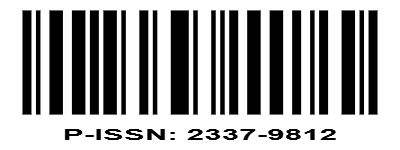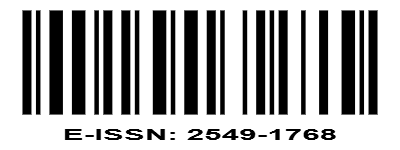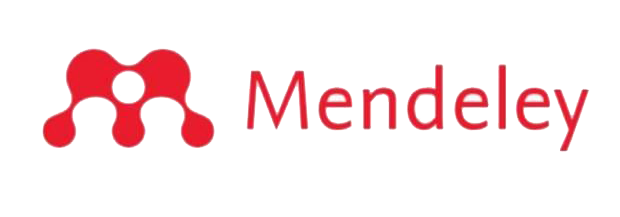STATUS ANGKA BEBAS JENTIK KOTA BANDA ACEH SEBAGAI DAERAH ENDEMIS DEMAM BERDARAH DENGUE TAHUN 2014
DOI:
https://doi.org/10.22373/biotik.v5i1.2978Keywords:
Status, Number of mosquito larvae-free, Endemic area, Dengue Fever (DBD)Abstract
One of vector borne deseases which still remains a health problem in Indonesia is dengue fever (DBD). This desease is caused by dengue virus transmitted by Aedes aegypti mosquitoes. One of cities which is endemic for DBD in 2014 was Banda Aceh. The indicator for DBD endemic is based on entomology index. One of entomology index to be measured is the number of mosquito larvae-free. To know the status of mosquito larvae-free number in Banda Aceh, a suvey has been conducted in three subdistricts within Banda Aceh city, namely Banda Raya (Lamlagang village), Ulee Kareng (Ceurih village), and Baiturrahman (Peuniti village). A survey was conducted in 100 houses of every subdistrict. The total of 300 houses were investigated. From 300 houses investigated, there were 158 houses were positively had mosquito larvae. From 860 containers that were found and checked in those three subdistricts, it was found that there were 235 containers were positively contained mosquito larvae. The container which contained mosquito larvae dominantly was bathups inside the houses, there were 48,22% of larvae and 60,47% of pupas. The results showed that the number of mosquito larvae-free for Banda aceh was 47,33% which indicated that it was still below the number of national larvae-free that is > 95%. Therefore, Banda Aceh is still in a high risk of DBD transmission in the future.Downloads
References
Sukowati S. 2008. Masalah Keragaman Spesies Vektor Malaria dan Cara Pengendalianya di Indonesia. Orasi Pengukuhan Profesor Riset Bidang Biologi Lingkungan. Jakarta : Badan LitbangKes. Kementrian Kesehatan. Jakarta.
Kementerian Kesehatan RI, Direktorat Jenderal Pengendalian Penyakit Penyehatan Lingkungan.2013. Data Kasus DBD berdasarkan Kabupaten/Kota di Indonesia tahun 2011-2013. Laporan Program Subdit Arbovirosis. Jakarta.
Kementerian Kesehatan RI, Direktorat Jenderal Pengendalian Penyakit Penyehatan Lingkungan.2013. Data Kabupaten Endemis DBD dan Chikungya di Indonesia tahun 2013. Laporan Program 2013. Jakarta.
Biro Informasi Kementrai Kesehatan. 2016. Kendalikan DBD Dengan PSN 3M Plus. Diunduh Tgl 25 Januari 2017. http://www.depkes.go.id/article/view/16020900002/kendalikan-dbd-dengan-psn-3m-plus.html.
BPS Kota Banda Aceh. 2015. Statistik Daerah Kota Banda Aceh 2015. Badan Pusat Statistik Kota Banda Aceh. https//:www.bandaacehkota.bps.go.id [disitasi tgl 25 Januari 2016].
World Health Organization. 2011. Comprehensive Guideline for Prevention and Control of Dengue and Dengue Haemorrhagic Fever. World Health Organization Revised and Expanded. Regional Office for South-East Asia. p.67.
Dinas Kesehatan Provinsi Aceh. 2012. Profil Kesehatan Provinsi Tahun 2012. Departemen Kesehatan RI.
Depkes. Pencegahan dan Pemberantasan Demam Berdarah Dengue di Indonesia. Buku 1: Penemuan dan Tatalaksana Penderita Demam Berdarah Dengue. Jakarta: Dirjen. P2PL, Depkes RI; 2005.
Hasyimi M., dkk. Kesenangan bertelur Aedes sp. Cermin Dunia Kedokteran. 1994;92. Dunduh tanggal 26 Januari 2017.
Santoso. Yahya. 2011. Analisis Kejadian Luar Biasa (KLB) Demam Berdarah Dengue (DBD) di Wilayah Puskesmas Rawasari Kota Jambi Bulan Agustus 2011. Jurnal Ekologi Kesehatan. Vol. 10 No 4. Hal : 248 – 255.
Downloads
Published
Issue
Section
License
Authors who publish with BIOTIK: Jurnal Ilmiah Biologi Teknologi dan Kependidikan agree to the following terms:
- Authors retain copyright and grant the journal right of first publication with the work simultaneously licensed under a Creative Commons Attribution License that allows others to share the work with an acknowledgement of the work's authorship and initial publication in this journal.
- Authors are able to enter into separate, additional contractual arrangements for the non-exclusive distribution of the journal's published version of the work (e.g., post it to an institutional repository or publish it in a book), with an acknowledgement of its initial publication in this journal.
- Authors are permitted and encouraged to post their work online (e.g., in institutional repositories or on their website) prior to and during the submission process, as it can lead to productive exchanges, as well as earlier and greater citation of published work.











